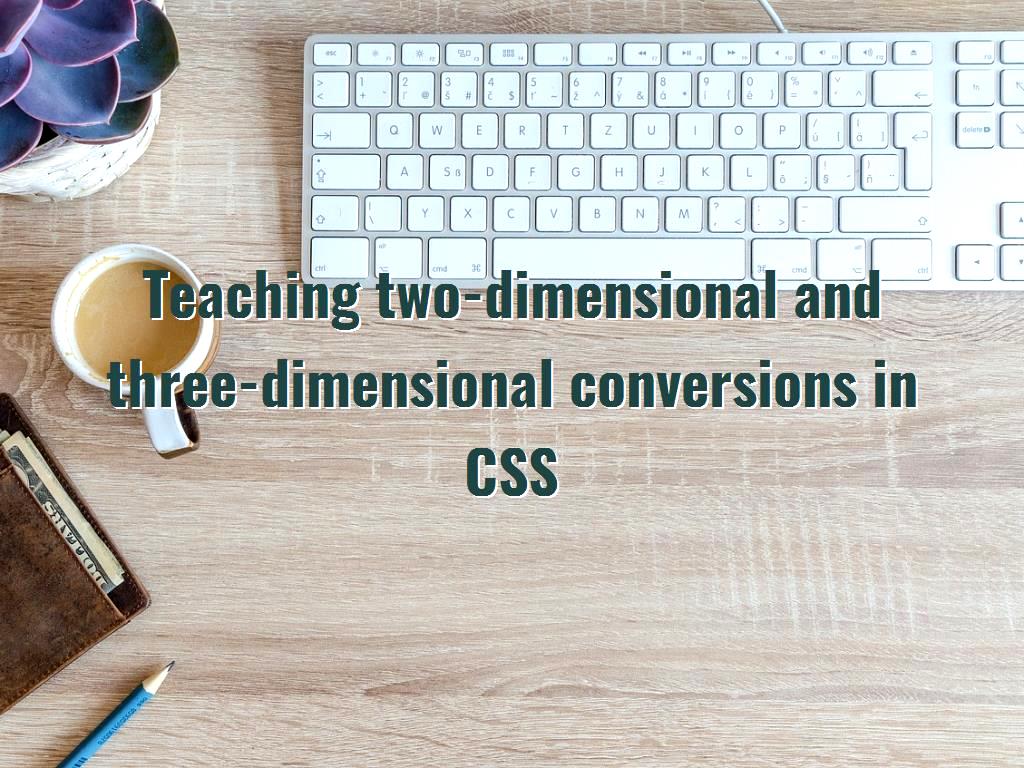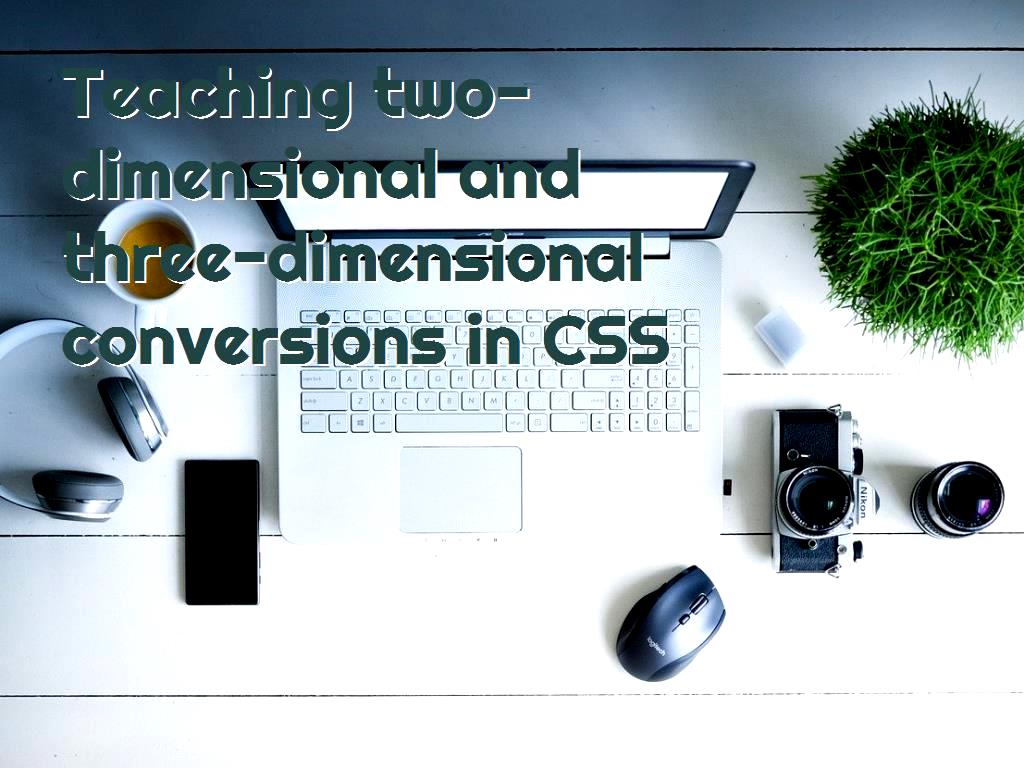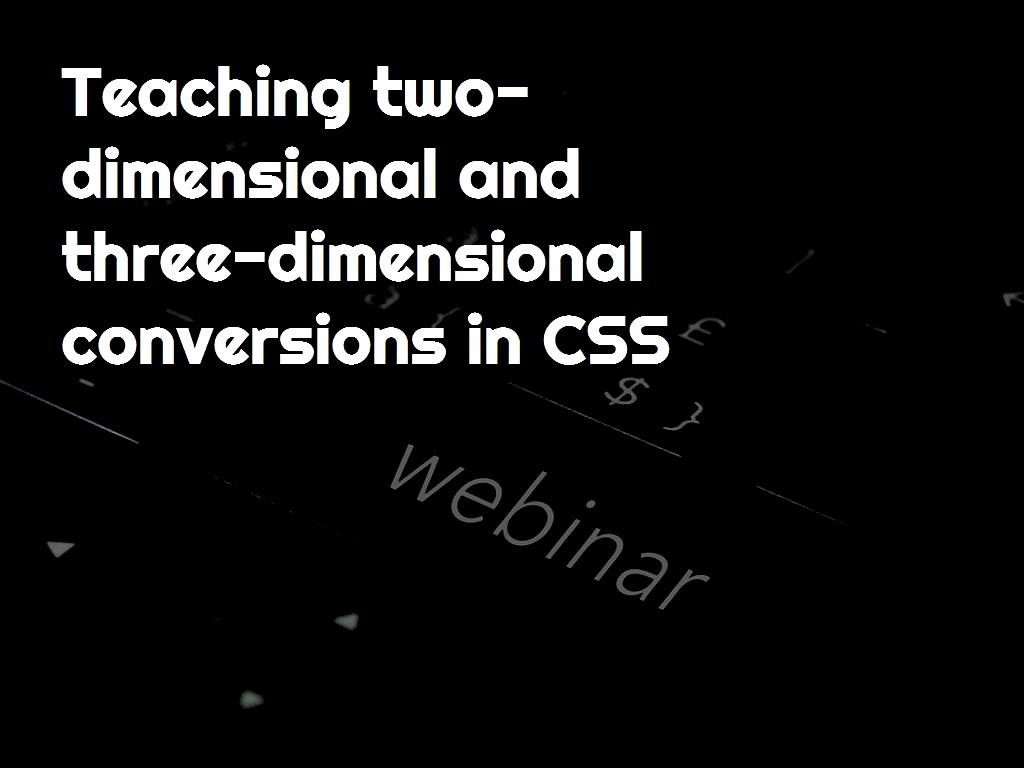Teaching two-dimensional and three-dimensional conversions in CSS
|
|
10 minute(s) read
|
Published on: Aug 20, 2021
Updated on: Dec 14, 2021
|
Conversion is one of the properties of CSS which you can use to change the state of elements. For instance, it helps you do some processes such as rotating, moving, zooming, skewing of ingredients. Lots of other changes that help you make in the state of an element in a way that you want, which we are going to explain each of them separately also we are going to explain the various functions of them as well with the help of some examples for a better understanding. Still, first of all, you have to be fully aware of the definition of CSS. because of its great importance in the field of website design(in French: conception de site Web ) and because these two types of conversions are considered as its features so that knowing the definition of it can help you be more familiar with the reason why we have to use these functions.

The definition of CSS:
It stands for Cascading Style Sheets which is a kind of language which contains coding elements and helps you display HTML elements in web page, this property also allows you to save time and energy due to the fact that you can control the layout of several pages for a variety of devices at the same time, for instance, you can style web pages, define text font, table styles and so on with the help of it, and it gives web developers the opportunity to have more control over the way that webpages look compared to HTML, which is considered as one of the main reasons of its popularity and also the reason why the number of developers(in Czech: vývojáři )who prefer to use it increases day by day, there are three kinds of it which are as follows: Inline CSS, Internal or Embedded CSS and External CSS, each of which is of a great importance and has been described in the articles of our website in detail, as a result, you can get more information by referring to them if you are interested in this field, and you can master it by gaining the critical knowledge which have been mentioned in these articles.
Now it is time to explain one of its features called conversion, with the help of which you can design your webpage in both two-dimensional and three-dimensional forms, all of which are going to be discussed with their good examples for a better understanding in the following.
There are some methods and functions which are being used in two-dimensional conversion including: Rotate(), Translate(), Matrix(), Skew(), SkewX(), SkewY(), Scale(), ScaleX(), ScaleY(), each of which has its own special effect on elements, which are going to be explained in this regard.
2D conversion:
The rotate() function:
This function causes an element to rotate from its position due to the specified degree. If the value is positive, it will turn clockwise but rotate counter-clockwise if a negative value is given. Rotation can also be done about X, Y, and Z-axis, called rotateX, rotateY, and rotateZ, respectively. There is an example in the following, in which an element which is called
The translate() function:
This function helps you move the specified element up, down, and sideways from its position about X and Y axis according to the given value; an example is mentioned below in which the specified element moves 20 pixels to the right and 70 pixels down, so pay attention to it for a better understanding:
The skew() function:
This function is for skewing the specified element according to the given angle along both X-axis and Y-axis. We are going to provide you with an example of this process through which you can skew the
The skewX() function:
As the name implies, you can skew an element according to the given angle along the X-axis with this property's help. Here is an example of skewing a part 30 degrees along this axis:
The skewY() function:
As the name implies, it causes your element to be skewed along Y-axis by a specified angle. There is an example of skewing the

The scale() function:
This method helps you change the size of your element based on given parameters like height and width so that you can do both processes of increasing and decreasing the size of the component by using this function. A good example is mentioned in the following, after which the element is going to be three times its current width and four times its current height.
The above example was about increasing the size of an element. Another example should be mentioned in this regard in which you can decrease the width and height of
The scaleX() function:
The scaleX() function is specified for changing the element's width, which can help you increase and decrease its size. An example is mentioned in this regard in which the feature will be increased four times its current width.
Also, if you want to use this method to decrease the width parameter by half, you have to pay attention to the following example, which can help you understand this part as well as possible.
.jpg)
The scaleY() function:
It is being used to change the height parameter of the element; there is an example in the following which shows you how to use this function to increase the height of the component five times its current value.
Furthermore, suppose you want to use this feature to decrease the height parameter of an element by half. In that case, it is better to pay attention to the example mentioned in the following section.
The matrix() function:
This feature is being used when you want to make lots of differences at once, because it is the combination of various two-dimensional conversions, it contains TranslateY() and TranslateX() that help you move your element, ScaleX() and ScaleY() which allow you to scale the element, SkewX() and SkewY() that help you skew it as the name implies so that you can use this part for implementing multiple changes to the element which is specified, in the following section, there is an example which help you understand it better, and make you use it with more awareness.
3D conversion:
We have explained 2D transform entirely and its types and their functionality in this article. Now it is time to explain 3D transform, which has an additional direction called Z-axis. We will also give you the proper examples for mastering this subject. It should be noted that this type of conversion in CSS contains three methods which are called: RotateY(), RotateX(), RotateZ(), each of which helps you change the current position of your element about its axis.
The rotateY() function:
The rotateY() function is a kind of method through which the element can be rotated by a specific degree about Y-axis, it should be mentioned that the bottom of this axis is positive and the top of it is negative; if you want to master this part as good as possible, we suggest that you consider the following example to have control over this part.
The rotateX() function:
It is a type of method which the element can be rotated by a specified degree about X-axis the help of it, it should be noted that the right side of this axis is considered as a positive value, and the left side is considered as a negative value, in the following part, we are going to give you an example in this regard which helps you find out more about the functionality of it.
The rotateZ() function:
As the name implies, this type of function can be used in order to rotate an element about Z-axis according to the degree which is given to you; you should also pay attention to the point that the outside of this axis is considered as a positive value and the inside of it is regarded as a negative value, there is as an example which is going to be mentioned in the following part that you can use to be fully aware of the way that this feature works.

Last word:
In this article, we have tried to give you a brief explanation of CSS which can be used in order to control the layout of several pages for a variety of devices at the same time so that you can save your time by using it, as a result, it is an essential factor, and you should know its definition due to the fact that 2D and 3D conversions are considered as its features that help you design your pages, we have also explained each of these conversions separately with proper example for each one in order to give you more information because each of which has different types that can change the position or size of an element in an other way, as a result, if you master this field and know the differences that each type is able to make in your aspect, you can design your webpages as good as possible and turn them into the ones which are able to attract lots of users so that you can achieve success as soon as possible due to the fact that an attractive design can increase the traffic to your website, and it can make users choose your website from lots of other choices, so it can get high ranking in Google search engine results page which is the primary goal of various website owners, as a result, if you pay attention to the mentioned points, you can make multiple changes quickly, we hope this article can be valuable and helpful for you.
Click to analyze your wesbite SEO